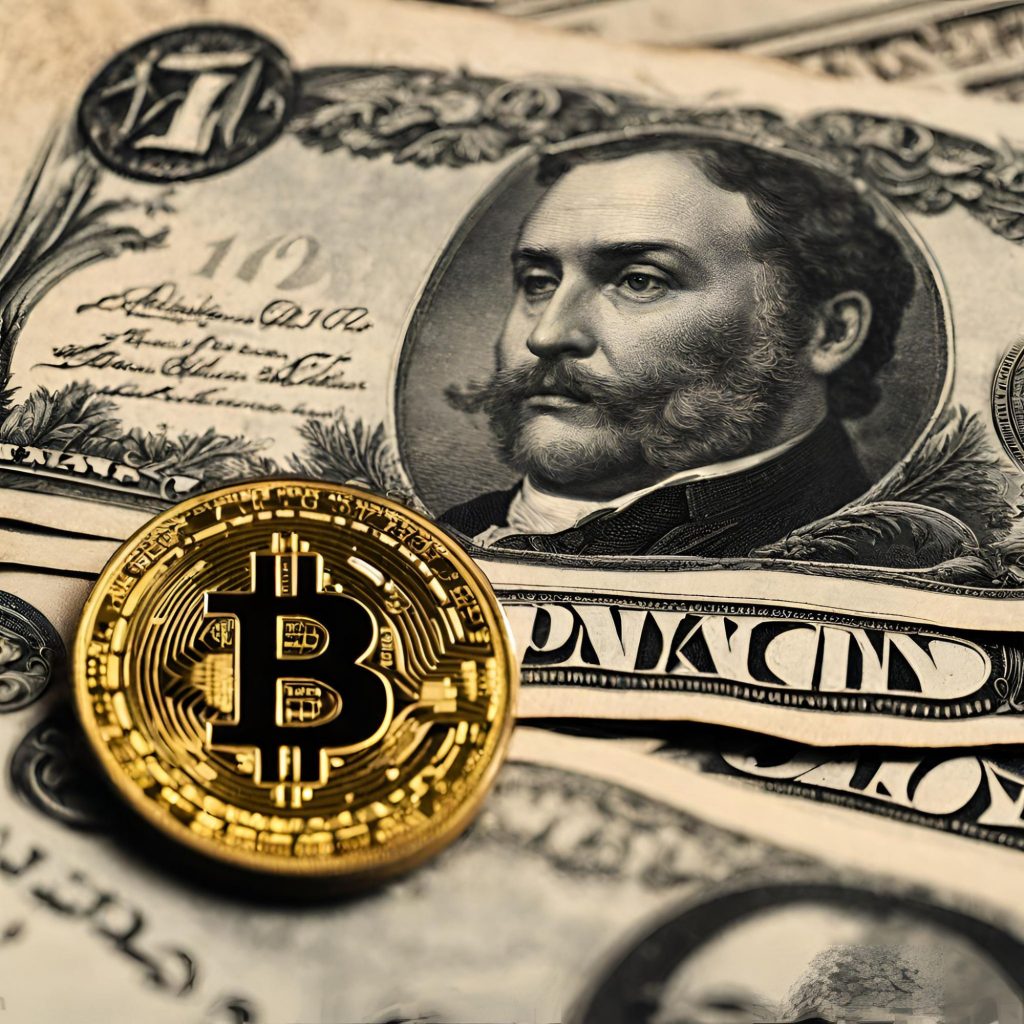Robert C. Hockett’s paper on the future of cryptocurrency (Cornell Law Faculty Publications) entitled “Money’s Past is Fintech’s Future: Wildcat Crypto, the Digital Dollar, and Citizen Central Banking” compares cryptocurrencies like Bitcoin and Ethereum to the frontier currencies of the 19th century known today by many names including: “wildcat” banknotes. These banknotes, issued by local banks in the 19th century can often be found in antique stores in the East and South,
In the 19th century, “wildcat” banks were private banking institutions that issued their own banknotes. These banknotes served as a form of currency, but unlike today’s sovereign-issued currencies, they were not backed by a central authority. Instead, these notes had their own exchange rates to the Federal Dollar, and anyone trading with these notes had the extra burden of convincing others to take these notes at certain exchange rates. These “wildcat” banks were often chartered by state governments and had the authority to issue their own paper money, leading to a proliferation of various currencies in circulation. The primary purpose of these wildcat banks was to facilitate local economic transactions and provide a medium of exchange. Land and frontier-related goods were being sold at accelerated rates that required some liquid form of currency and the increased demand for liquid currency was difficult for the Federal Government to keep up with.

Hockett highlights that during this era, even though the United States had an official currency, the US lacked a strategy to scale a uniform national currency. Instead, private banks issued their own notes, denominated in dollars, but with varying degrees of reliability. These banknotes were not sovereign-issued liabilities, and their value fluctuated based on the issuing bank’s stability, regulatory oversight, and geographic location. The consequence was a fragmented and unreliable currency system known as the “wildcat banking” era.
How is Cryptocurrency like Bitcoin and Ethereum similar to Wildcat Banknotes?
Hockett’s essay draws parallels between the historical era of wildcat banking and the contemporary rise of cryptocurrencies, such as Bitcoin and Ethereum. It argues that both share similarities in terms of being decentralized and issued by private entities. Cryptocurrencies operate without direct oversight from a central authority, much like how wildcat banknotes were issued by private banks without a unified regulatory framework.
The comparison emphasizes the volatility of both wildcat banknotes and cryptocurrencies. In the 19th century, the value of wildcat banknotes fluctuated based on the reliability of the issuing banks, much like the volatility experienced by cryptocurrencies in today’s markets. Similar to the fate of wildcat banknotes, cryptocurrencies may face challenges in achieving widespread acceptance and stability without regulatory intervention.
The History of US Currency in 3 Stages
The three stages the U.S. took to regulate the U.S. dollar are outlined as follows:
Stage 1: Wildcat Banking Era (Pre-1860s)

- Description: This stage refers to the period before the 1860s when the U.S. did not have a uniform national currency. Private banks issued their own banknotes, known as “wildcat” banknotes, which were denominated in dollars but lacked a unified regulatory framework.
- Characteristics: Private banks, chartered by states, issued their own notes with varying reliability. The value of these banknotes fluctuated, leading to a chaotic and unreliable currency system.
- Regulatory Landscape: Lack of effective regulation at the federal level allowed private banks to issue their own currencies, resulting in a decentralized and fragmented monetary system.
Stage 2: Uniform National Currency (1860s – 1913)

- Description: This stage followed the regulatory interventions prompted by the Civil War. The Legal Tender Act of 1862, National Currency Act of 1863, and National Banking Act of 1864 established a system of federally chartered National Banks, introducing a uniform national currency known as the “Greenback.”
- Characteristics: Federally chartered banks adhered to uniform regulatory standards, backing their notes with sovereign bonds. The result was a more stable and uniform national currency, replacing the diverse wildcat banknotes.
- Regulatory Landscape: The Office of the Comptroller of the Currency (OCC) played a crucial role in administering and regulating this new national currency system.
Stage 3: Federal Reserve System (1913 – Present)

- Description: The establishment of the Federal Reserve System in 1913 marked the beginning of a new stage in the regulation of the U.S. dollar. The Federal Reserve Act of 1913 created the Fed, which took over the administration and regulation of the national money supply from the OCC.
- Characteristics: The Fed became the central bank responsible for issuing and administering the national currency. Federal Reserve Notes replaced the Greenbacks, and the system introduced greater flexibility with an elastic currency to accommodate transaction and credit demand.
- Regulatory Landscape: The Federal Reserve Act established the Fed as the central bank, capable of modulating the money supply to ensure smooth economic growth and stability.
These three stages represent the evolutionary path of U.S. currency regulation from a decentralized and unreliable system to a more centralized and regulated structure under the oversight of the Federal Reserve and gives us some clues on how the Federal Reserve may handle the regulation and digitization of currency in the future.
What is Citizen Central Banking?
The concept of Citizen Central Banking is introduced as a forward-looking vision for the evolution of the financial system. Advancements in financial technology will enable the Federal Reserve to administer a national system of “Citizen Accounts.” These accounts, held directly with the Fed, would eliminate the issue of the “unbanked” population and simplify monetary policy.
In this vision, the Federal Reserve would have the capability to make direct monetary transfers to citizens during economic downturns, bypassing the need for intermediaries like private banks. Hockett suggests that this approach would enhance the effectiveness of monetary policy, making it more direct and responsive to economic conditions. Additionally, Citizen Central Banking is presented as a solution to privacy concerns, as blockchain technology could safeguard the privacy of citizens while maintaining transparency.
Why did the Federal Government need to regulate and abolish Wildcat Banknotes?
During the 19th century, the lack of a unified regulatory framework led to significant variations in the reliability and value of banknotes issued by different banks. This created a chaotic financial environment, with citizens facing uncertainty about the true value of the currency in their possession.
To address these challenges, the federal government intervened with legislative acts, such as the Legal Tender Act of 1862, the National Currency Act of 1863, and the National Banking Act of 1864. These acts established a system of federally chartered National Banks, introducing a uniform national currency (the “Greenback”) and phasing out the era of wildcat banking. Hockett underscores the role of the Office of the Comptroller of the Currency (OCC) in regulating and administering this new national currency system.
What Does the History of Wildcat Banknotes tell us about the future of Cryptocurrency?
The historical narrative of wildcat banknotes serves as a lens through which we can examine the potential future trajectory of cryptocurrencies. By drawing parallels between the two, the volatile nature of wildcat banknotes, stemming from their decentralized issuance, foreshadows potential challenges for cryptocurrencies.
Just as wildcat banknotes faced regulatory intervention for stability and uniformity, cryptocurrencies may require similar oversight to address issues of volatility, fraud, and lack of widespread acceptance. The historical context of wildcat banking serves as a cautionary tale, emphasizing the importance of regulatory frameworks to ensure the stability and reliability of any form of currency.
What are the benefits of the US Government Moving to a Digital Dollar?
A Fed-issued and -administered digital currency would provide uniformity, stability, and efficiency in the monetary system. The move to a digital dollar is presented as an evolution beyond physical currency, offering advantages such as enhanced tracking capabilities through distributed ledger technology (DLT).
A key advantage highlighted is the potential for financial inclusion through Citizen Accounts directly held with the Federal Reserve. This would eliminate the issue of the unbanked population, making banking services accessible to all citizens. Additionally, the digital dollar is seen as a means to streamline monetary policy, allowing the Fed to make direct transfers to citizens’ accounts during economic downturns or implement interest rate adjustments more effectively.
What Conditions Would Accelerate The US Government to Issue a Digital Dollar?
Advancements in payments technology, specifically distributed ledger technology (DLT), are key drivers for this transition. As central banks worldwide explore upgrading their payments systems, the U.S. Federal Reserve would likely adopt DLT as a foundational technology for the digital dollar.
Economic conditions, such as recessions or liquidity traps, are presented as catalysts that could prompt faster adoption of a digital dollar. Efficiency, transparency, and potential for direct monetary interventions offered by a digital currency become more appealing under adverse economic circumstances. The convergence of technological advancements and economic imperatives is proposed as a scenario that could accelerate the issuance of a digital dollar.


